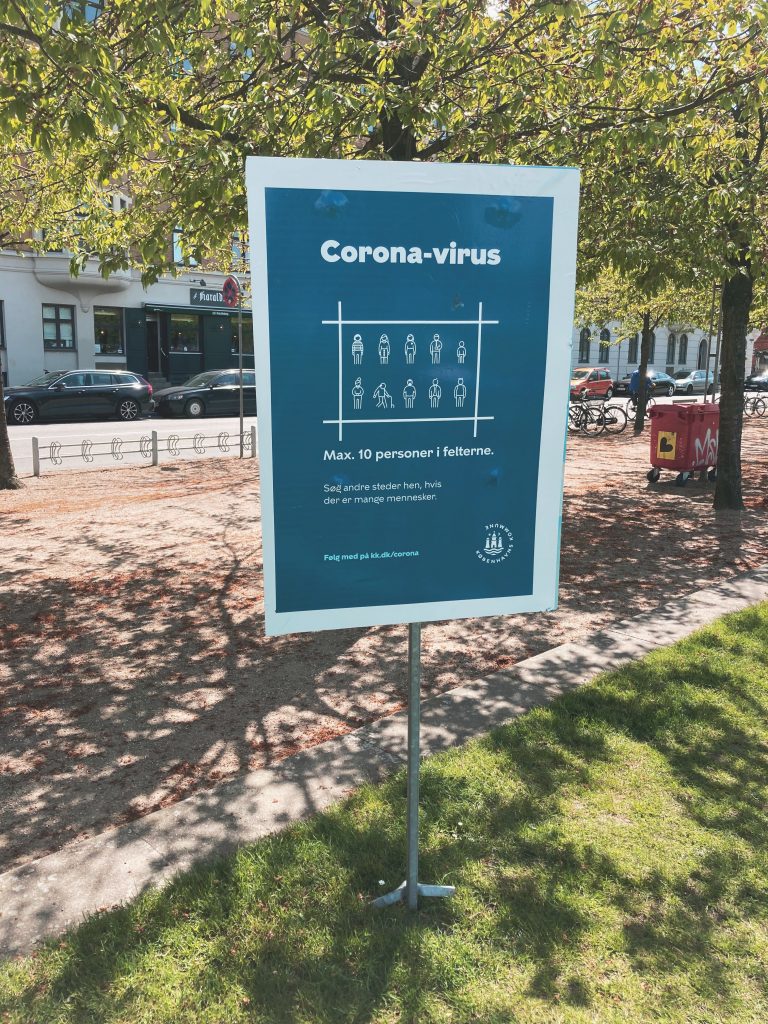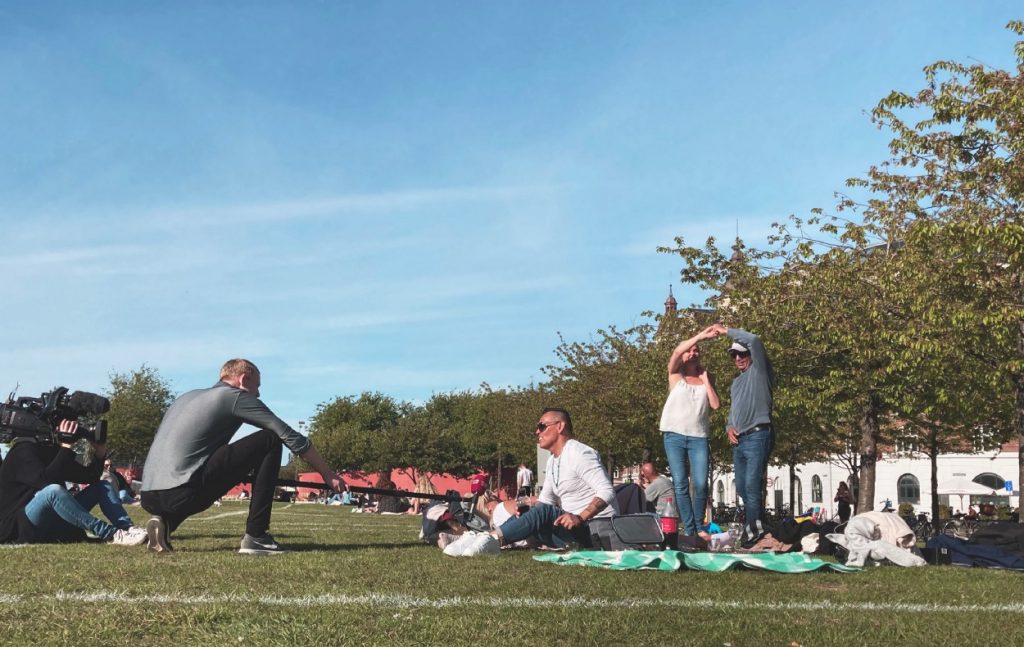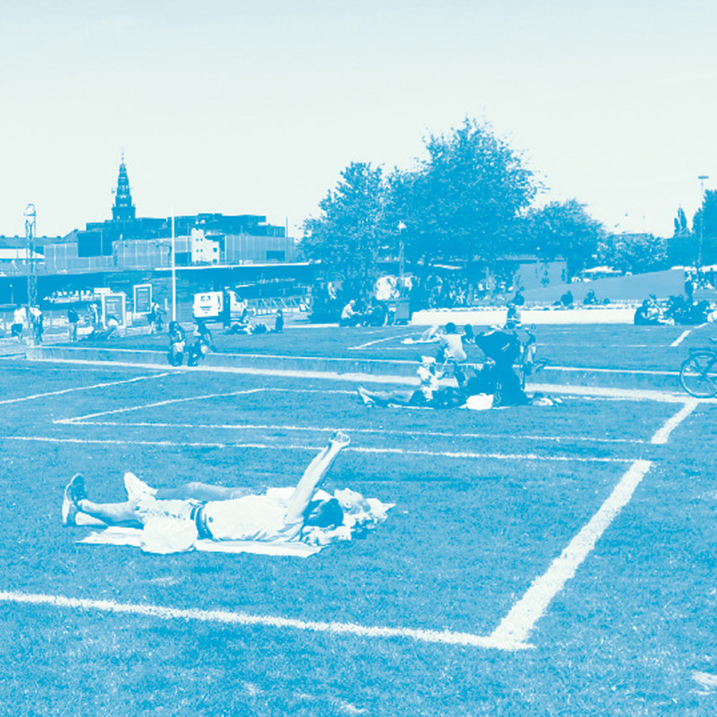
I have been lucky enough to observe how the city life of Copenhagen changed during the whole pandemic period from the beginning of the lockdown measures set in the second half of March towards the end of May. I say that I was lucky because from the first days of April I got a job as a food delivery bike courier for a food delivery company here in Copenhagen. Such work gathers enlarged risk to health, as you are exposed to public spaces and citizens on an hourly basis. But as an urbanist, I couldn’t be happier to be a part of this live experiment in the city of Copenhagen.
Yes, in the earlier days of the lockdown and when the most strict measures were set in place, I sat on my bike and delivered food to people who were either self quarantining or might have been infected and were staying home as a safety measure. For the nearly 2 months of the pandemic in the Danish capital, I have traveled over 1000 km on my bike and met hundreds of people, whose lifestyle was completely changed in a few short months.
The Danish reaction was quite strong and firm. The government decided to close all public institutions but allowed private sector companies to decide whether they wanted to close or continue to work while implementing their own safety measures. However, the country’s borders closed on the 14th of March, one day after Poland did, which is where I come from.
For some time, the public institutions including schools were closed, as well as the borders but city life still seemed to flourish. After a couple of days, restaurants were closed as well but were allowed take away options. I have an impression though that besides the fairly empty streets in Denmark, and especially in Copenhagen, which I was able to observe daily, made it through the crisis more or less unscathed.

The biggest measure was surprisingly not made by the city council initially but was an answer to people’s behaviour. Shortly after the sunny weather approached the Danish capital at the end of April, thousands of people gathered outdoors in parks, public spaces, and streets, meeting with friends whom they probably haven’t seen in quite some time . But what happened in Havneparken — a popular Harbourfront park in the Islands Brygge neighbourhood, took a step too far. Thousands of people sat on the grass next to each other, drinking beer and not giving any extra attention to others around them. Copenhageners clearly missed the sun and spending time with friends and could not resist this basic human need.
Hundreds of people, many which drank, partied and danced to loud music from boomboxes at the end of April, was when COVID-19 was reaching its peak and many people were being hospitalized at that time.
Not only was it too much for the residents of Islands Brygge who were being disturbed both by the noise and the irresponsibility of the people, it was crossing the line for the city council too. After a vast critique of this event, the police were asked to close the harbour park to the public. It was the first time during the pandemic that such a strict measure was introduced and a public space was closed to the public.
Police patrolled the park for a couple of days, even fining some mothers for letting their children play at the local playground, which got a big spotlight in the news. The police were criticized for such strict measures. There were even some individual protesters who sat on the bench at the park while police were still in the area. The protesters were demonstrating their right to use the public open space.
But what is most important is that the city’s decision seemed to work. For nearly two weeks, the grass was empty. However, it wasn’t only because of the ban but also because the weather no longer acted as an incentive for people to gather outside . It was cold and grey so naturally, people wouldn’t use the park as much.
Although the closure of the park brings a lot of controversies, I find that it was needed. It was a good lesson for the people who acted irresponsibly. Such a measure also allowed to have a binding follow up to the decision.
After the ban was released at the beginning of May, multiple squares were painted on the grass by the city authorities. The squares marked special zones that could accommodate a maximum of 10 people at the time. So, on one area of grass that could previously be used by hundreds of people at a time, only 50 could be allowed to use it now.

A similar measure was introduced in Domino Park in New York City, but circles were used instead of squares. The privately-owned Domino Park is not managed by the New York City Department of Parks and Recreation, and that is the main reason why the circles appeared at this park only and not throughout the whole city. However, the City of Copenhagen manages all the Parks and the painted squares appeared only in one of them.
The idea seems to work more or less, so far. The solution is temporary, the squares are drawn with white removable spray paint, the kind used for football pitches, and serve as a temporary solution. However, it is an extremely interesting example of the new division of public space in the (after) COVID-19 times.

Now, with the painted squares on the grass, people who visit the park seem to obey the rules. Even though some people are sitting outside of the squares, they rather keep the necessary distance. Some even count how many people are sitting within the square before they sit inside. But a hot summer is approaching and as fewer Danes will travel abroad, I wonder if the painted squares will continue to be a sufficient tool during the summer season. Islands Brygge park is one of the most famous places in the whole of Copenhagen. I am curious about how this situation will develop in the future and if it will be the lesson for the city.
In the end, it serves as a picture for how the daily life we are used to is more fragile than we can even imagine. After several weeks of (not forced) quarantine, the city life seems to be back. Surprisingly, it came back very shortly after the COVID situation started to stabilize at the end of May. Maybe even too soon.

I think that the basic human need for socializing will always win over the safety measures set by authorities. Instinctually we are herd animals and we have the urge to be in contact with other people. It is so unnatural to avoid people and have the health consequences imagination on spot. We are not programmed to incorporate total social distancing and isolation for extended periods of time. This is also why I think that there will not be many drastic changes to the urban lifestyle of Copenhagen citizens after COVID-19.
There will be restaurants and retail introducing some safety measures (designated food pick up spots or hand sanitizer at the entrance for example), but city life will be back to its ways from before COVID-19, and actually, it is already starting to look like there was no pandemic at all.
This article was a part of the Post Quarantine Series by PLACY and can be originally found here:
https://medium.com/post-quarantine-urbanism/sidelining-public-life-in-copenhagen-8ee7b3c52ed5

